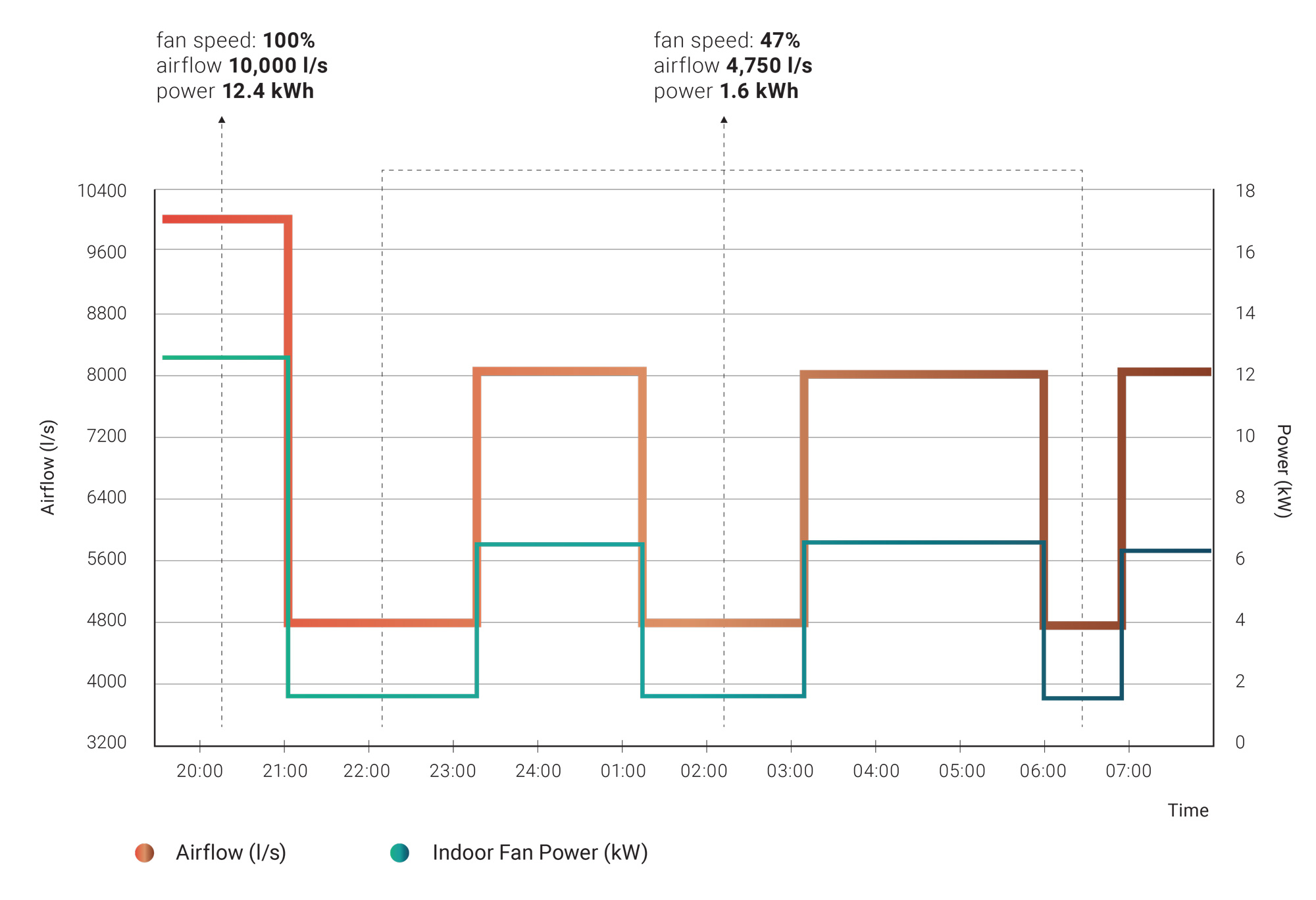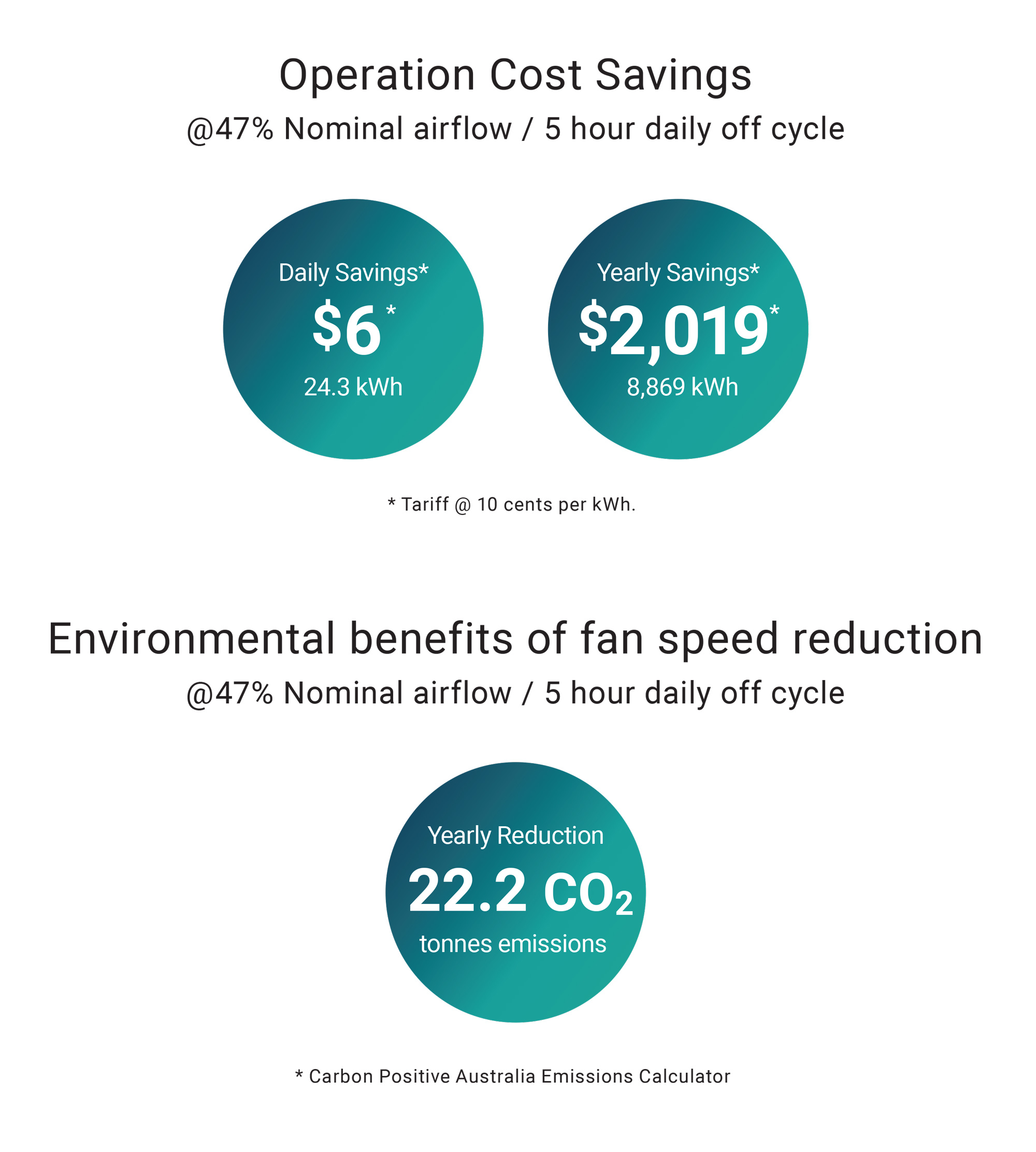What are the benefits of slowing down the fan during the off-cycle?
Welcome to our 'energy savings series' where we use monitored data of actual HVAC sites to provide insights into energy and carbon emission savings strategies in HVAC applications.
By monitoring the HVAC services of a retail outlet with humidity control, we were able to measure the effective change in energy consumption as a result of the system utilising a lower fan speed during the unit's off cycle.
In this study we have aggregated historical system data on a 210 kW Temperzone OPA 2100. This series of unit comes standard with plug and play functionality programmed within the onboard unit controller enabling intuitive system operation to maintain space temperature and humidity setpoints. The unit controller software is programmed and maintained in-house and comes pre-programmed with several advanced features, a particular feature is the 'No Load - Fan offset' function, when active this enables the reduction of the airflow delivery volume based on the customers’ requirements.
The 'No Load - Fan offset' is activated during the units off cycle when the room conditions are within dead band. This feature is particularly useful for 24/7 operational sites or sites that experience peak demands seasonally but not throughout the year.

The retail outlet this unit services utilises the fan offset strategy to maximize energy savings while providing minimum airflow requirements. After analysing the data over a 12-hour period, we observe a very positive result. It is clear the strategy is effective as the room conditions are balanced during the off cycle, it would not be unexpected if the temperature and humidity within the space increased steadily, however, the unit efficiently manages itself within the parameters of the set conditions and the results show 5 hours where the unit is effectively running with a reduced airflow delivery.
The outcome of slowing the fans down during the off cycle decreased the input power by 87%, lowering the airflow from 10,000 l/sec to 4,750 l/sec. This resulted in a dramatic decrease in consumed power from a set design of 12.4 kWh, reduced down to 1.6 kWh. In this particular use case, if you were to factor in 5 hours of ‘No Load – Fan offset’ operation per day for 12 months, at a tariff of 10 cents/kWh, the savings would equate to $2,019 over the year.
Small energy saving opportunities also contribute towards achieving wider business carbon reduction goals. Considering the carbon emission factor from energy generation*, we observe that this unit would prevent 22.2 tonnes of C02 emissions annually from energy generation due to the use of the ‘No Load – Fan offset’ function.

Talk to us about selecting the right product for the right application. Our team of passionate and enthusiastic individuals offer advice and support on all our product lines and can recommend the best control strategy or system setup tailored to any application. You may also choose to have an expert attend site to start up the equipment, and also train your staff to ensure effective project delivery.
* Carbon Positive Australia Emissions Calculator